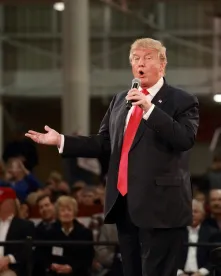Memorandum does not delay applicability date—but is it enough for firms to stand down?
Anxiously awaited by many in the financial services industry, President Donald Trump has issued a memorandum ordering the Department of Labor (DOL) to examine the fiduciary rule it finalized last year. Absent further regulatory, legislative, or judicial action, this rule is scheduled to become applicable April 10, 2017. As such, many firms are facing immediate deadlines to be in compliance with the rule on that date, including making changes to their business models to address the legal risks resulting from the rule, completing and mailing fiduciary acknowledgments and required disclosures for the transition period, and communicating with their representatives, employees, clients, and customers about the impact of the rule and related changes to services.
While the memorandum itself did not delay the rule (as had been expected and widely reported in the press), the Acting Secretary of Labor[1] announced on the same day that “[t]he Department of Labor will now consider its legal options to delay the applicability date as we comply with the President’s memorandum.”[2] Further, the DOL’s webpage for the rule has been updated with the following statement:
On February 3, 2017, President Trump signed a Presidential Memorandum directing the Department of Labor to examine the Fiduciary Duty Rule. The information contained on these pages may be subject to change as a result of that examination. Please continue to check this website for updated information.[3]
These statements strongly suggest we will likely see additional regulatory action regarding the rule in the coming days and weeks, including specifically a delay in its applicability date.
What the President’s Memorandum Does
The memorandum directs the Secretary of Labor to do the following:
-
Prepare and update an economic and legal analysis of the impact of the rule, taking into consideration
-
whether the rule has harmed, or is likely to harm, investors due to reduced access to advice and other services;
-
whether the rule has resulted in dislocations or disruptions that may adversely affect investors and retirees; and
-
whether the rule is likely to cause an increase in litigation and an increase in prices for retirement services.
-
-
Issue a proposed rule rescinding or revising the rule if the DOL makes an affirmative determination on any of these points, or otherwise concludes the rule is inconsistent with the administration’s priority to “empower Americans to make their own financial decisions, to facilitate their ability to save for retirement and [to] build individual wealth.”
This memorandum seems to be part of the administration’s stated goal of making financial regulation more effective, efficient, and tailored, and it was issued at the same time as the Executive Order on Core Principles for Regulating the United States Financial System, the president’s first official action on the Dodd-Frank Wall Street Reform and Consumer Protection Act.
What to Expect Next
The next step is for the DOL to determine how to implement the presidential directive. This will likely be through a notice in the Federal Register within the next few days or weeks, possibly proposing a delay and requesting comments on the issues raised by the memorandum.
How to Respond
Parties affected by the rule may wish to provide information to the DOL on the issues identified in the memorandum, including the following:
-
Concerns they may have with the rule in its current form (as well as the new exemptions and FAQs);
-
Concerns they may have with amendments to previously existing exemptions;
-
Issues raised by the complete or partial withdrawal of the rule; and
-
Technical and operational issues being caused by the current applicability date.
Where We Are Now
While it is widely anticipated that the DOL will delay the rule, that hasn’t happened yet and April 10, 2017 is still the applicability date. In light of the continued uncertainty regarding the rule’s future, firms are advised to proceed carefully as they evaluate their compliance strategies, business models, and communications with their representatives, employees, clients, and customers.
Firms may also wish to be proactive in helping the DOL supplement its record in support of delaying, revising, or revoking the rule (and other related exemptions and guidance) by providing their concerns to the DOL, as noted above.
[1] The president has nominated Andrew Puzder as Secretary of Labor, but he has not been confirmed by the Senate as yet. The DOL is currently headed by Ed Hugler as acting secretary.
[2] US Department of Labor News Release, “US Department of Labor to Evaluate Fiduciary Rule” (2/3/17).
[3] US Department of Labor Website, “Conflict of Interest Final Rule” (last visited 2/4/17).





 />i
/>i
